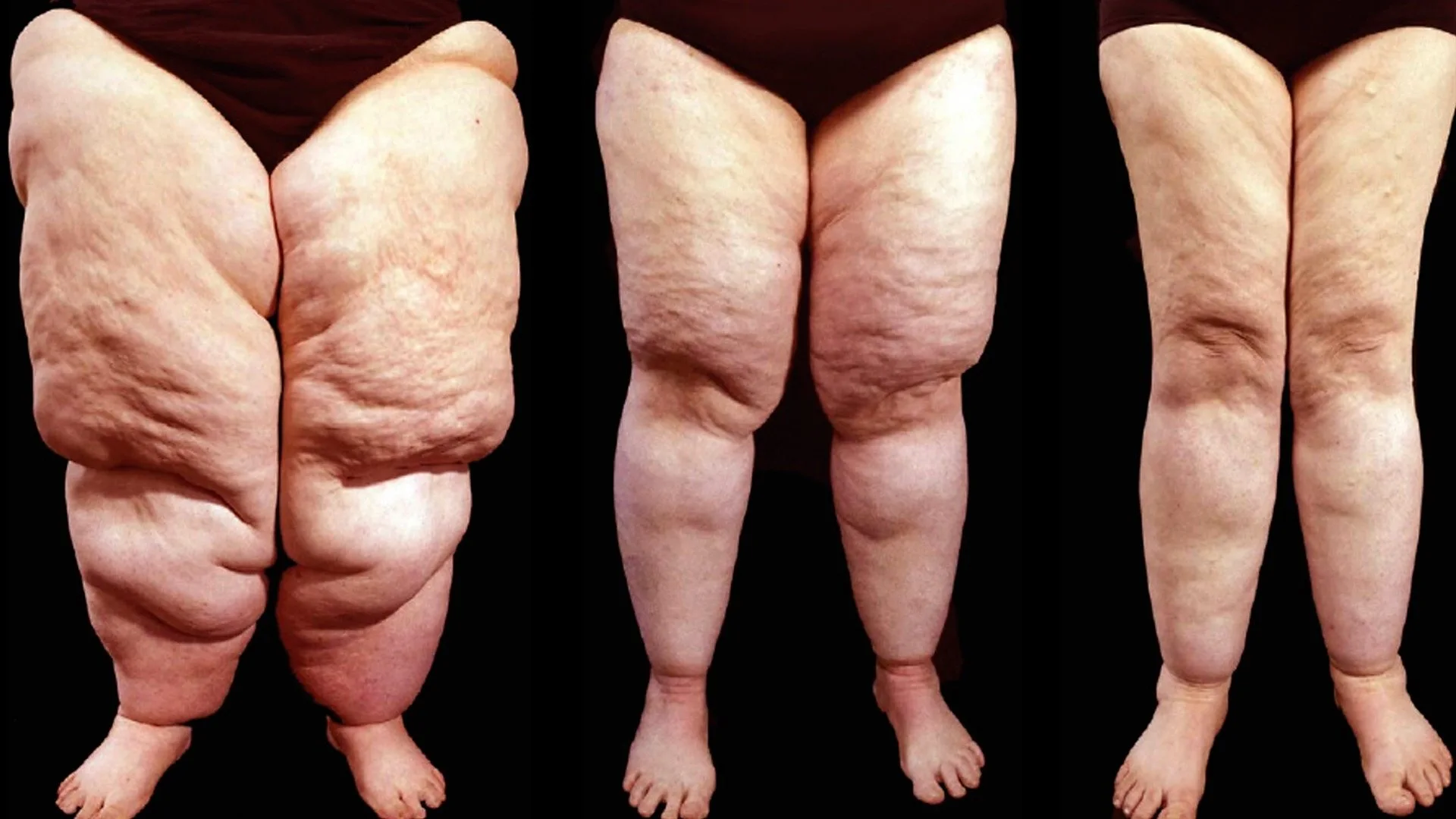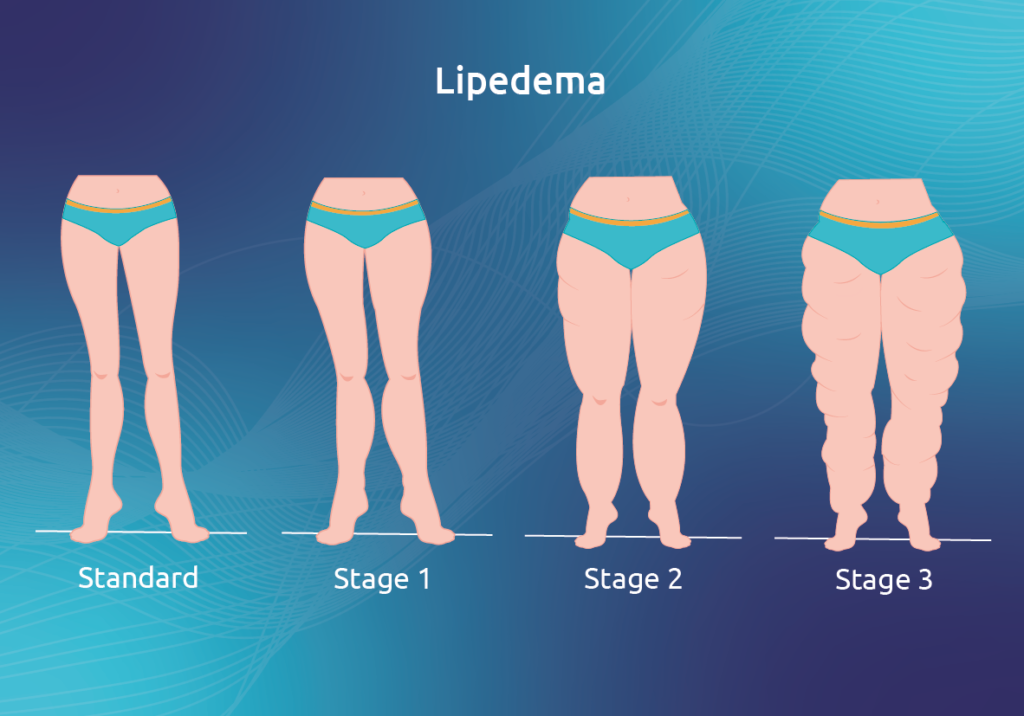What is Lipedema?
Lipedema is a chronic, progressive disorder of fat metabolism, primarily affecting women. It results in an abnormal and symmetrical accumulation of fat in the lower body, particularly in the legs, hips, and buttocks. In some cases, the arms may also be affected, while the feet and hands remain unaffected. This disorder is distinct from obesity and lymphedema and often leads to discomfort, pain, and easy bruising.

Key Characteristics of Lipedema:
- Symmetry: Fat accumulation occurs equally on both sides of the body, typically starting at the hips and extending down to the ankles.
- Pain and Tenderness: The affected areas are often painful to touch and bruise easily.
- Swelling: Although the feet and hands are unaffected, swelling in the legs or arms may worsen throughout the day.
Lipedema often appears during hormonal changes such as puberty, pregnancy, or menopause, and it is largely resistant to diet and exercise. Many people with Lipedema are misdiagnosed with obesity or lymphedema due to a lack of awareness about the condition.
Stages of Lipedema:
Lipedema appears in a series of three stages:
Stage 1 presents in patients as skin that is flat stretched over pearl-sized nodules that show up within a layer of fat showing increased cell size. Stage 2 presents as indented skin that’s covering a layer of fat cells presenting as pearl to apple-sized masses.
Stage 3 presents as pearl-sized nodules in combination with excessively large fat masses causing lobules along the legs, hips, and thighs and frequently extending to the torso or upper arms.

Impact on Quality of Life:
Lipedema not only affects physical appearance but also severely impacts quality of life. Many patients experience significant pain, difficulty walking, and limited mobility as the disease progresses. Furthermore, the lack of awareness surrounding Lipedema often leads to misdiagnosis, delayed treatment, and emotional distress for those affected.
Living with Lipedema:
Managing Lipedema requires a combination of medical treatment, lifestyle modifications, and emotional support. Conservative treatments such as compression therapy, manual lymphatic drainage, and exercise can help reduce symptoms, while liposuction may be considered for more advanced cases to remove excess fat and improve mobility.
Do You Have any Query?
Frequently Asked Questiones
Lipedema is a chronic condition where fat accumulates disproportionately, usually in the legs, hips, and sometimes arms, causing pain and swelling
Distinguishing between normal fat and lipedema fat can be challenging as they can appear similar. However, there are several characteristics and symptoms specific to lipedema that can help differentiate it from normal fat accumulation. Here’s how to identify lipedema:
Key Characteristics of Lipedema Fat:
- Symmetrical Fat Distribution:
- Lipedema fat is typically distributed symmetrically on both legs, hips, buttocks, and sometimes arms, sparing the hands and feet.
- Pain and Tenderness:
- Lipedema fat is often painful and tender to the touch. Women with lipedema may experience discomfort, bruising, and swelling.
- Texture and Feel:
- The affected areas may feel nodular or lumpy due to the uneven distribution of fat. Lipedema fat often has a different texture than normal fat.
- Bruising:
- Women with lipedema bruise easily and may have frequent, unexplained bruises due to increased fragility of blood vessels in the affected areas.
- Resistance to Diet and Exercise:
- Lipedema fat is resistant to weight loss through diet and exercise. While overall body weight may decrease, the affected areas often remain disproportionate.
- Swelling:
- Swelling in the legs and arms, especially by the end of the day, is common. This swelling does not usually reduce with elevation or compression
Common symptoms include excess fat buildup in the lower body, pain, tenderness, and easy bruising. The upper body usually remains unaffected.
Lipedema is not caused by excess calorie intake. It is a fat disorder, where fat builds up in specific areas, and it doesn’t respond to typical diet and exercise.
Treatments include conservative methods such as compression garments, manual lymphatic drainage, and physical therapy, as well as surgical options like liposuction.

